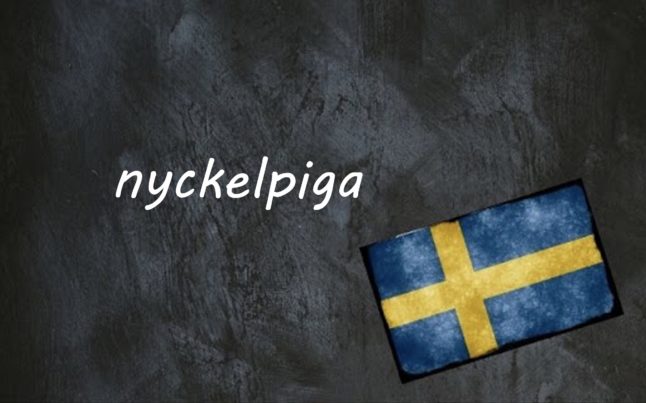Gärna is a very useful Swedish word, which can often be literally translated as ‘willingly’ or ‘gladly’, but is used much more often and in more informal contexts than either of those words in English. Speakers of other languages might spot the similarity with German gern, Danish gerne and Icelandic gjarna, with all these words sharing a root in the Old Norse word gjarn (‘willing’ or ‘eager’).
So how do you use it? Gärna can be used as an adverb in sentences like ‘jag tar gärna en kaffe‘ (literally ‘I’ll happily have a coffee’ but closer to ‘I’m happy to have a coffee/I’d like to have a coffee) or ‘jag hjälper dig gärna‘ (I’m happy to help you).
You can also use it on its own, in which case it’s a snappier alternative to ‘yes, I’d like that’ or ‘yes please!’ For example, you can reply to the question Vill du följa med? (would you like to come along?), with gärna!, meaning ‘yes please’ or ‘I’d love to’, or if someone asks Vill du ha mjölk och socker? (Do you want milk and sugar?), you can answer Gärna mjölk, tack (Milk, please). Gärna can also be used when you’re talking about someone else, such as in the sentence hon talade gärna (she was happy to talk) or hon vill gärna följa med (she would like to come too).
It’s also possible to use it to mean ‘if you like’, for example ta gärna kontakt (‘feel free to get in touch’ or ‘please get in touch’) or ta gärna med hunden (bring your dog if you like). In these examples, the use of gärna softens the requests: ta med hunden (bring your dog) is a command, while adding gärna emphasizes that the decision is up to the listener. This phrasing is particularly common in situations where the speaker is encouraging someone to do something they may think they aren’t allowed to.
But combined with the verb få (ought/can), you can phrase something as a command which isn’t really optional, without being overly aggressive. Telling someone ‘du får gärna ta kontakt‘ could gently urge them to get in touch, or even be a slightly passive aggressive reminder that they should already have been in touch.
Gärna can also be used when you’re not implying any choice or pleasure linked to the action, but simply implying that something happens readily, easily, or often. This might mean you’re talking about inanimate objects, for example den faller gärna sönder (it falls apart easily).
Finally, be aware of the set phrase lika gärna, which means something like ‘just as easily’ or ‘just as well’, so the phrase det hade lika gärna kunnat vara jag means ‘it could just as easily have been me’ and Hon använde inte ordet “ful”, men det hade hon lika gärna kunnat göra means ‘she didn’t use the word “ugly”, but she may just as well have done’.
Example sentences
Visst, gärna det
Sure, I’d like that
Jag vill gärna träffa dig
I’d love to meet you



 Please whitelist us to continue reading.
Please whitelist us to continue reading.
Member comments